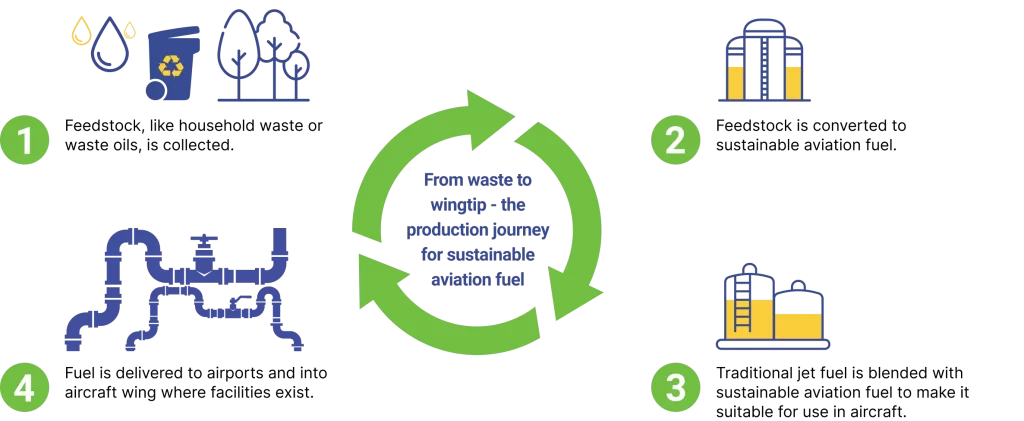Ryanair Sustainable Aviation Research Centre
Ryanair Sustainable Aviation Research Centre
Together we will:
- Determine the sustainability of SAF through analysing the amount of lifecycle greenhouse gases emitted throughout its production.
- Devise pre-screening tools for accelerated certification of early SAF candidates which will remove unnecessary regulatory barriers.
- Evaluate the feasibility of zero-carbon aircraft propulsion systems.
- Create a noise map for the minimal noise aircraft fleet.Create a noise map for the minimal noise aircraft fleet.
- Examine aviation non-CO2 emissions, with an aim of understanding and developing predictive tools for contrail formation.
- Develop an internationally recognised methodology that supports the predictions of NOx, SOx and soot particles.
How is SAF made?
What is SAF and where does it come from?
SAF avoids the generation of new carbon emissions
from fossil fuels and minimises global warming.
Rather than being refined from petroleum, SAF is
produced from sustainable sources like waste oils (from biological origin), agricultural residues or
non-fossil CO2. SAF can reduce greenhouse gas emissions by
up to 80%.
SAF can be blended with fossil jet fuel and requires
no special infrastructure or changes to equipment.
Once blended, this fuel can be fully certified and
have the same specifications as that of fossil jet fuel.
Therefore, it is essential that we
understand which SAFs will genuinely reduce carbon emissions. Only
then can we have an effective
regulatory framework that ensures the production of SAF does not erode
or hamper the use of dedicated
cropland needed for food production.
Aviation is not the only industry that will want to introduce more sustainable fuels. We must think outside the box and remain inventive to keep costs low, reduce competition for SAF and ensure we opt to use a fuel that can clearly demonstrate significant greenhouse gas (GHG) reductions. SAF is a very useful way to reduce carbon emissions, we simply want to ensure it is as safe and sustainable as it can possibly be.
Fast Facts
Our goal is 12.5% SAF usage by 2030.

SAF is blended with jet fuel without the need for engine modification.

Ryanair and Trinity College Dublin Sustainable Aviation Research Centre launched in 2021.

Widespread use of SAF can reduce aviation greenhouse gas (GHG) emissions by up to 80%

*Sustainable Aviation Fuel (SAF) is an alternative to conventional aviation fuels, potentially reducing the industry’s reliance on fossil fuels. While SAF emits similar CO₂ levels during combustion, its lifecycle CO₂ impact is significantly lower – at least 65% less than fossil-based kerosene – thanks to its production from non-fossil resources like used cooking oil. Nonetheless, the CO2 emissions caused during the flight remain almost the same. As per ReFuelEU Aviation Regulation, we ensure that the SAF we select meets strict sustainability standards.
Despite its limited availability and impact when compared to the entire sector’s footprint, SAF usage is a positive step forward. The EU mandates fuel providers to mix on average 2% of SAF for flights departing from the EU.


